Read the part 1 of 5G mmWave: Ecosystem, Economics Becoming Attractive here.
5G ecosystem is thriving. The number of operators rolling out 5G networks, increasing penetration of 5G chipset-based devices and growing attach rate to 5G data plans, all have come together to give 5G a faster adoption rate than 4G. Close to 200 operators across 75+ countries have gone live with 5G networks within just two years of the launch of the first 5G network. 4G took almost four years to cross this milestone. Close to half a billion 5G smartphones have been shipped globally in just nine quarters since the shipment of the first 5G smartphone. 4G smartphones took 16 quarters to reach the same milestone. We forecast 5G smartphone shipments to cross more than half a billion in 2021, which means almost one in two smartphones shipped by the end of this year would be 5G capable. This is significant.
The Second Wave of 5G
With all this traction, the mobile industry is now entering the second growth wave of 5G. We can call it “True 5G”. The 5G mobile networks are changing in two major ways:
- From 5G NR NSA (Non-Standalone) to 5G NR SA (Standalone) architecture, enabling many true 5G use cases, network slicing, lower latency network and so on.
- Expanding the spectrum portfolio by adding a higher-bandwidth 5G mmWave spectrum to the existing 5G sub-6GHz spectrum to enable significantly higher capacity, multiple Gigabit throughputs and lower cost per GB among other benefits.
While the transition to 5G NR SA is happening fast, the mmWave spectrum adoption is in the early stages as it is a function of spectrum availability across geographies, though it is becoming broadly available in key geographies in the near term. Further acceleration of the mmWave adoption will be driven by more clarity among Communication Service Providers (CSPs) around the mmWave economics, recuperating investments (ROI), and potentially lucrative use cases.
In the previous analysis (see here), we highlighted how the 5G ecosystem is growing and the unit economics around mmWave, and how it can reduce the Total Cost of Ownership (TCO) significantly to help accelerate the ROI for CSPs.
To further help CSPs understand the high-potential use cases and related ARPU to build upon the traditional smartphone data revenue via mmWave, Bell Labs Consulting conducted a detailed techno-economic modeling analysis based on real-world scenarios. Bell Labs has taken Europe as the market for this business case analysis.
Opportunities
As a real scenario case study, a CSP with a 30% share in a market such as the UK can capture nearly 130% more or 4200 PB in additional data traffic annually over the next five years by targeting 5G mmWave deployments in the following scenarios:
- Hot Zone Deployment: Transportation hubs, indoor shopping malls, stadiums, outdoor venues
- Fixed Wireless Access (FWA) in Households: Underserved home, communities, SOHOs
- FWA in Enterprises: Offices, Small and Medium Businesses, etc.
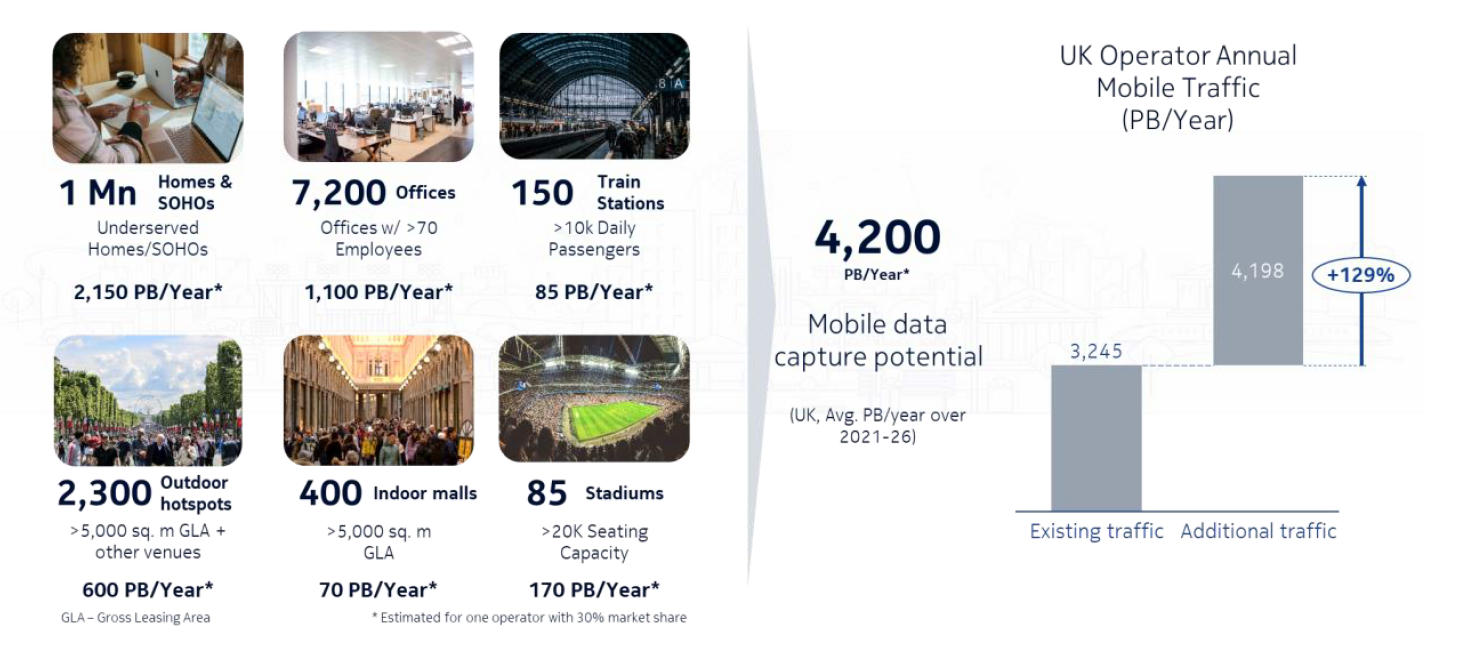
Most of the above scenarios are highly underserved across markets when it comes to use cases usually associated with fixed broadband access, choice of service provider, pricing, and service satisfaction. The COVID-19 pandemic has shown us the growing demand for broadband in households, and as we began resuming normal lives after the pandemic, the hotspot deployments in public locations became important.
Cost Efficiencies
The key here is to capture the significant data traffic opportunity at important dense locations across different types of devices by building a high-capacity, high-throughput and cost-efficient network. This can be only driven by deploying a mmWave 5G solution, which offers as much as 800MHz bandwidth versus 100MHz bandwidth available for a sub-6GHz solution. This translates into more GBs served per MHz of bandwidth, reducing the overall cost per GB versus the continuous investments in mid-band spectrum-based infrastructure over the years to capture the incremental data traffic growth in high-density hotspot locations.
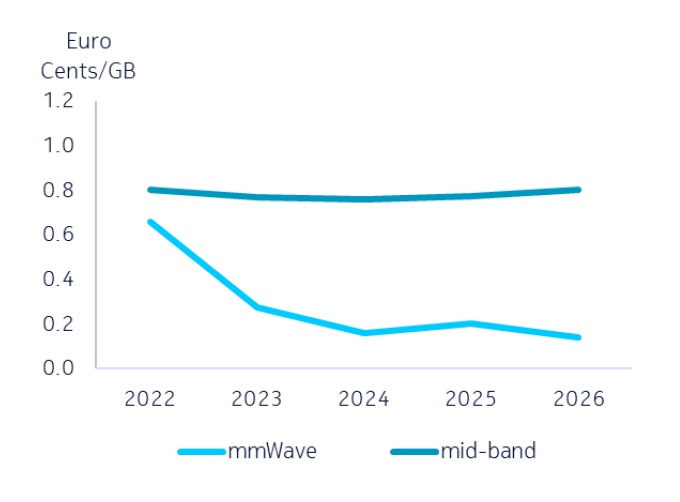
Business Case
From the TCO and per GB cost-savings perspective, mmWave 5G is cost-efficient. Additionally, from the incremental revenue capture and ROI perspective, the business case is even more lucrative. mmWave can complement the 4G, 5G mid-band and fixed broadband Wi-Fi in many scenarios, be it stadiums, shopping malls or offices.
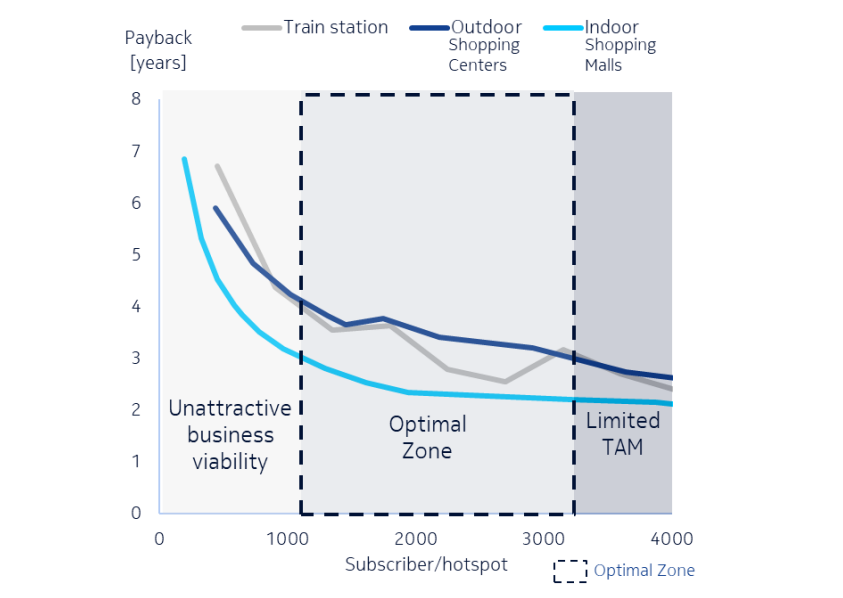
For smartphone use cases, the business viability for 5G mmWave works well in scenarios with 1,000-3,000 subscribers per hot zone. As the subscriber density increases from 1,000 to 3,000, the business viability improves as the ROI period of the 5G mmWave business case reduces. However, the study also estimates that beyond 3,000 subscribers, the business viability flattens out due to a reduced number of hot zones featuring such user density. Therefore, the 5G mmWave nicely complements sub-6GHz to serve in underpenetrated, hard-to-reach and underserved outdoor and indoor segments such as malls, train stations and busy streets. The provision of managed connectivity for office and enterprise premises also looks like a lucrative new opportunity for operators, according to the study.
Consider the deployment of an mmWave hotspot at a train station as an example. This could seamlessly and adequately serve multiple high-throughput (downlink and uplink) use cases, like video security surveillance, analytics, IoT ticketing machines, AR workforce, autonomous ADVs, connected billboards and real-time train arrival tracking. This type of deployment with respect to the investment for enterprise-grade connectivity, driving operational efficiencies and savings, can offer a significant revenue opportunity for the CSP.
For such a use case, a CSP should look at a payback period of just under three years for its investments. This makes 5G mmWave an attractive business case for such targeted applications where there is a latent need with incremental data traffic across multiple use cases and, therefore, a significant monetization opportunity with a faster ROI.
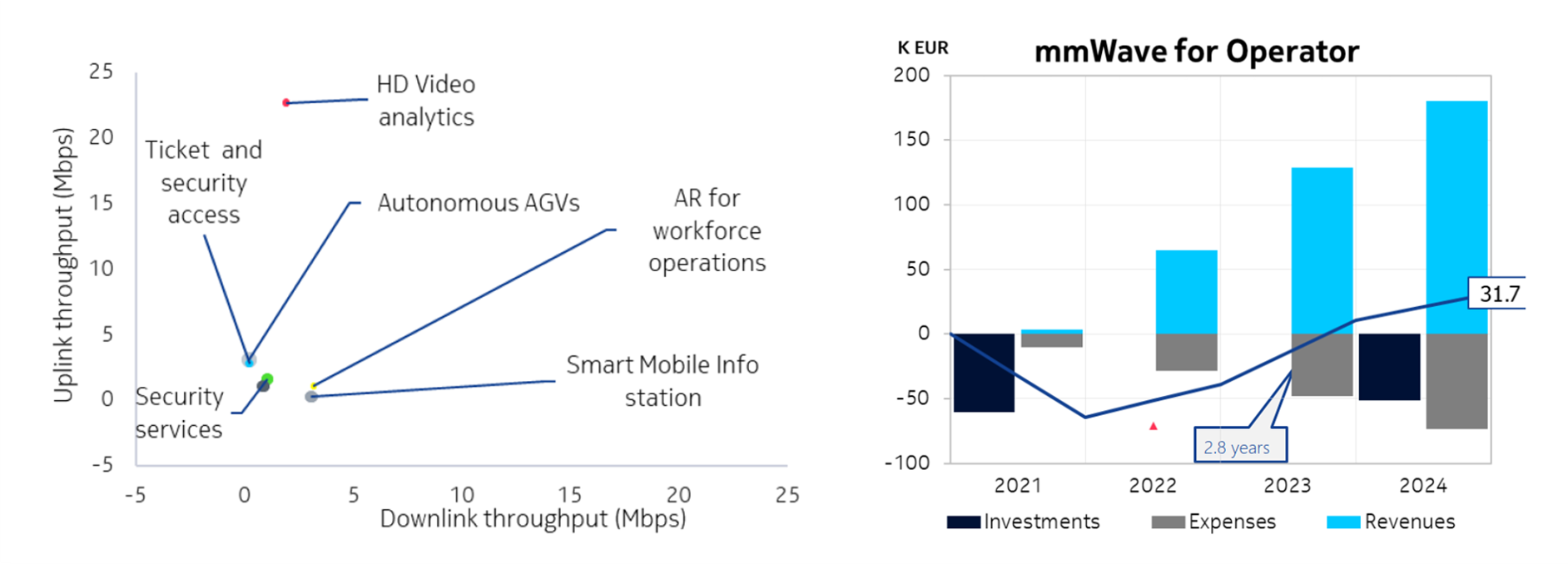
Bell Labs quantifies the revenue boost for a CSP in Europe as an 8% increase in the top line annually in five years. This is possible by serving the users with unlimited data plans at a relatively higher price point than the traditional smartphone data plans but cheaper or on a par with the fixed broadband plans in underserved high-density locations or homes or business users with laptops. The laptops usually contribute to more than 95% of the total download or upload data traffic in a typical office space. This also drives the need for CSPs, OEMs and the ecosystem to have 5G mmWave support in a business laptop as a de-facto specification similar to Wi-Fi 6. It also warrants making available more 5G mmWave-capable consumer-grade laptops in key markets where CSPs are deploying or planning to deploy 5G mmWave FWA networks.
Capitalizing on these opportunities, the CSP is staring at a minimum revenue potential of over $355 million annually in a market such as the UK. This ARPU opportunity could be even higher in markets such as the US, Japan and South Korea, and high-scale 5G FWA mmWave options in underpenetrated markets such as India and Brazil.
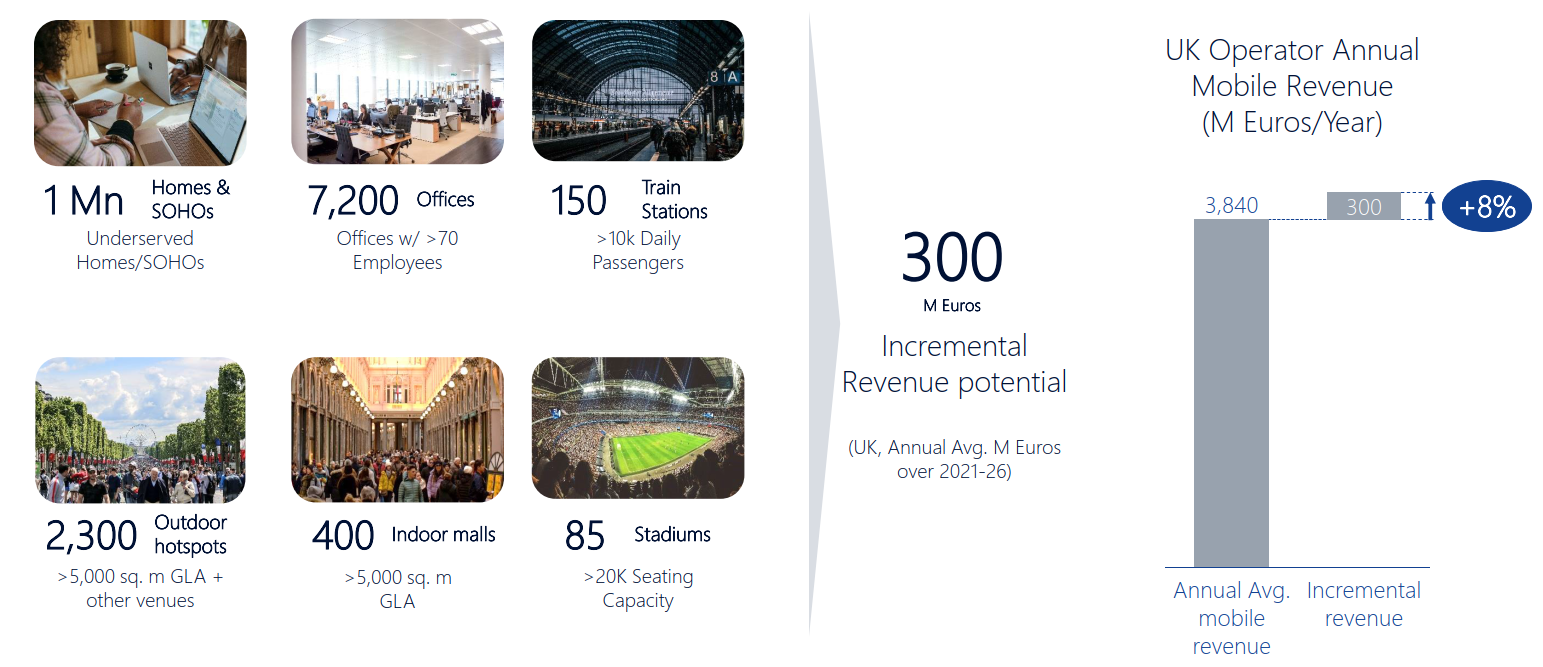
Conclusion
In this second wave of the 5G era, 5G mmWave-based networks will help CSPs deliver “true 5G” experiences as well as capture the monetization opportunities not available before. The above analysis provides a direction for CSPs on the immediate, low-hanging and high-impact use cases beyond smartphones, AR/VR and cloud gaming.
Considering the characteristics as well as capabilities of the 5G mmWave spectrum, developing targeted 5G mmWave hot zones will be the right approach for CSPs in this second wave to help scale the network and realize the true 5G promise.
These key strategic considerations should not only accelerate the penetration of 5G mmWave-grade broadband in existing underserved markets but also support newer use cases and services requiring reliable, secure, cost-efficient and faster downlink and uplink throughputs.
Scaling these deployments across public, household or enterprise premises and newer devices, the different use cases will help operators capture the incremental data traffic and boost the top line with relatively faster ROI.
In some markets such as the US and Europe, 5G mmWave offers cost-effective broadband choices to the target organizations. In markets such as India, it could help in enterprise and social digital transformation while also presenting a case to bridge the digital divide as the network and technology specifications mature.

